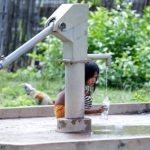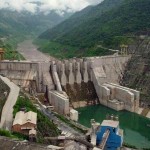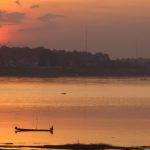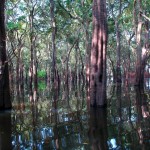Water resources

Introduction Water is the lifeblood of the Lower Mekong Countries. With economies and cultures inextricably connected to the Mekong River, built as they are on the production and consumption of rice and fish, people living in the Mekong countries are highly sensitive to changes in water. ...
Trends and challenges
![Source: Aqua Monitor, Donchyts et.al, (2016), "Earth's surface water change over the past 30 years", Nature Climate Change v.6, page 810-813. [screen shot taken 4/10/2016].](https://opendevelopmentmekong.net/wp-content/uploads/2016/10/aqua-monitor-mekong-delta-150x150.png)
The management of water resources is becoming a critical issue in the region as competition for water increases and climate change takes hold. At the same time, the rapid conversion of forests to other uses has diminished the environmental capacity to regulate water at the ...
Water governance

Because of the transborder nature of water ecosystems, a regional approach to water governance and the management of water resources is fundamental to both sustainable development and the assurance of water rights. Hydrobasins in the Lower Mekong. View the full map in Map Explorer.This need ...
Ground water

When water seeps into the earth after a rain or flood it fills the spaces between the rocks and soil particles providing moisture for plants and percolating into larger spaces called aquifers. Groundwater naturally flows to the surface again as springs and wetlands. ...
The Mekong

The Mekong River, and its associated basin, are the mainstay of the region’s rice and fish economy, as well as providing water for domestic, municipal and industrial use. Approximately 4350 km in length and originating high in the Tibetan plateau, it passes through six countries: ...
Rivers and lakes

Introduction Rivers and lakes are two types of surface water. In Cambodia, Laos, Myanmar, Thailand and Vietnam (or the Lower Mekong Countries), the majority of surface water is organized into large river systems that network into streams, lakes, ponds and wetlands, and flow into deltas. It ...
Watersheds

Watersheds are impacted by many factors, through interaction with both natural elements and human activity in the area. The trees and plants in forests not only tap into the water within the soil, but they also affect the quality and composition of the soil itself, ...

